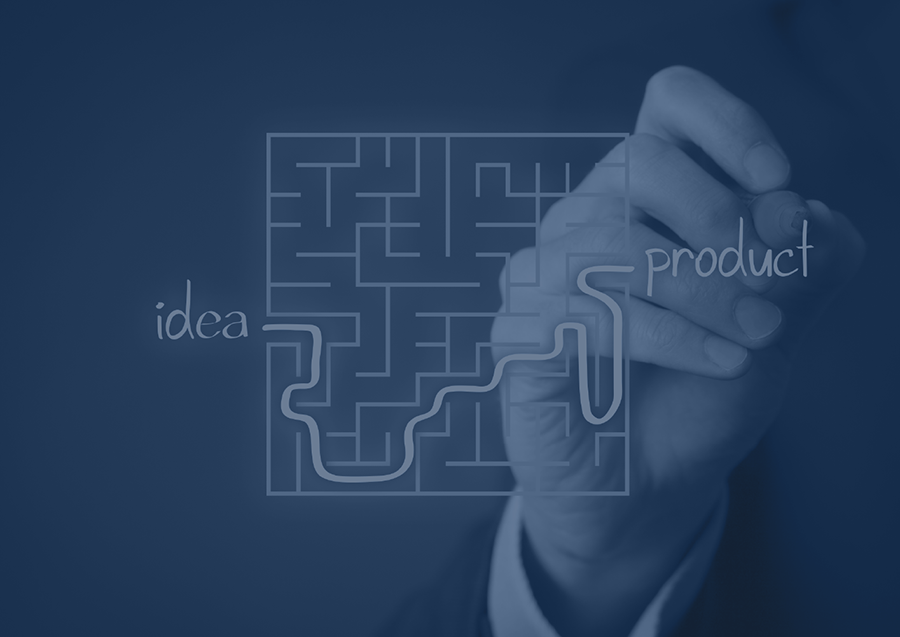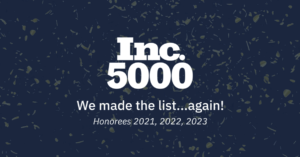There is a shift underway, transforming how IT delivers on solutions for the business and customers. The Project to Product methodology, a flexible, end user-focused approach to IT management, drives better solution design and development with more focused business outcomes, improved consumer experiences, better stakeholder engagement, and faster speed to value.
At the intersection of business goals, enterprise needs, and customer demands are solutions that require modern and constantly evolving technology platforms. It’s the reality of living in a digital economy. The shift towards digital has also opened the market up for organizations to bring smart, effective solutions to their enterprises and customers, but IT teams must move quickly and deliver at the speed of business so their investments don’t take too long to deliver value.
IT has historically relied on a milestone driven approach: start with a project, meet the deadlines, [optimistically] stay on budget, start the cycle again. The project approach is usually long lived, and siloed IT organizations faced with continuously changing priorities aren’t set up for success. Often forced to compromise value in order to show progress, technical teams can get so caught up in the process that they can lose sight of the desired business outcomes. And while the Agile mindset has seemed like a game changer for many organizations, it often falls short due to the traditionally siloed nature between IT and the business.
The Project to Product methodology builds on the Agile approach, helping to further close the gap between IT and business. It focuses more on understanding the end user experience in order to address the root issues, enabling IT to build technology solutions that companies need to transform more effectively.
Never Lose Sight of the End User
A key aspect of the Project to Product approach is shifting the focus from solving immediate needs to creating long-term value. This shift, while subtle, can be a difficult transition for companies in traditional industries. Transitioning to a product centric approach requires a cultural change and mindset shift for planning, organizing, and delivering – learning how to operate more nimbly like a software company, but in the enterprise environment.
When you follow a project, even with the Agile mindset, teams can get caught up in the day-to-day achievements and continuous pressure to show immediate value. Project to Product allows you to think about the lifecycle of the product and ensure you are building a solution that will have long-term success because you will have a closer engagement from the customer to business to IT.
We can close this gap by better understanding the customer/end user upfront. First, we start by developing the different personas that will be using your products/solutions to understand the responsibilities and challenges they face. Then, you identify the key use cases for your customer/end user that will outline the tasks, workflows, and challenges for each. Before any planning or budgeting takes place, understanding the underlying business need is critical. We must pose questions such as: What products are being heavily used and why? Then teams should design the product landscape around the highest value products.
Project to Product in Action: Playing the Long Game
A few of our clients in more traditional industries have been making the transition to a product centric focus. These enterprises have had to invest the time to restructure their IT teams and upskill their employees. They understand that moving to a product first mindset is not a flip you can switch, but the return can be double the investment down the road.
One client in the airline industry shifted to a product mindset by viewing their cloud platform as a business product for all their customers rather than multiple IT projects trying to move into cloud computing. Doing so required them to change their focus from completing individual projects to investing in more reusable platform components that could benefit all of their customers. This investment in the foundational cloud platform reduced cost, improved security, and accelerated future adoption of cloud computing across the enterprise. This foundation has allowed them to serve the business with increased insights into their customers, employees, and business operations. The results were around $10M in cost avoidance, transforming several key elements required to operate applications, and building 70+ reusable cloud platform modules for use across technology.
An automotive client reorganized their IT department to develop their digital retail platform around a product-centric mindset. Their organizational structure follows a trickle down approach to ensure the customer is always considered while technology goals are being met. The client established dedicated product manager roles, which are critical to the product approach, to interface across all teams, allowing the business to scale the product as needed. Each product manager carries the customer goals to the product owners who maintain that mindset when breaking down technology goals with their Agile delivery teams. This transformation resulted in 80+ dealers onboarded to the new platform with an increase in profit of around $225 per vehicle and over 9% of sales growth for those dealers.
Traditional Industries Must Evolve or Risk Getting Left Behind
As every industry becomes more digital, the large, traditional leaning companies need to figure out how they can remain competitive.
To start, it’s critical for an enterprise to identify its true differentiators, either established or desired, and connect those throughout the entire value chain. IT has been evolving along this path over the last couple of decades. The Project to Product transition is one more step in this direction and is vital for traditional enterprises to embrace as they learn to incorporate a new level of customer/end user understanding.
The next step of a product-first focus is enabling IT with the technical capabilities to bridge the gap, viewing them almost as a digital company within the already established large scale enterprise. This strategic cultural shift creates more ownership of the product from end-to-end, asking IT teams to consider not only what’s required to build the product but also how to support it over time, typically resulting in a higher quality product.
Another key to the product-centric mindset is department enablement. Whether the customer for the product is an internal team or an external buyer or user, IT is often disconnected from their needs and goals. Any communication between departments is typically at a higher leadership level and gets lost in translation as it makes its way down the pipe. By enabling employees at every level of the reporting structure, businesses also enable a better flow of communication for a higher value product.
Moving to a product-centric approach will drive better product design and development with more focused business outcomes, improved consumer experiences, better stakeholder engagement, and faster speed to value. However, this evolution must be made strategically to ensure every change and restructure is intentional and continue to build on the company’s desired business outcomes. Change for the sake of change is a costly way to learn, and the potential impact to your overall culture should not be underestimated.
Taking the Plunge into Project to Product
We’ve seen these trends building for a long time across a variety of different industries. Digital transformation isn’t going anywhere. Businesses should consider evolving to a Project to Product approach before they’re overtaken by faster, more nimble competitors.
The shift will be challenging, especially for massive enterprises who have been delivering with a project approach for a very long time. Even though these businesses tend to have more resources to work with, the transition requires a cultural shift with the potential need for restructuring the organization, establishing new rules, and teaching employees new skills. Think of it like a cruise ship making a right turn: the process requires a lot of energy for the massive ship. But once it makes the turn, the cruise ship will leave all the flashy speedboats in its wake.
Two Roads Consulting works with companies of all sizes to manage challenging transitions. We’ve helped several clients install aspects of the product centric framework, including this ongoing project with an automotive client who developed a successful digital retail platform. Let us know how we can be part of your company’s cultural and digital transformation.



